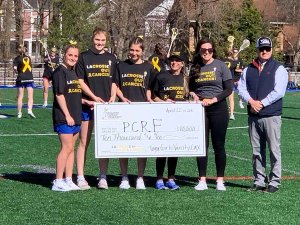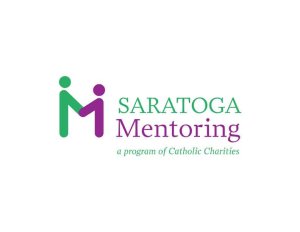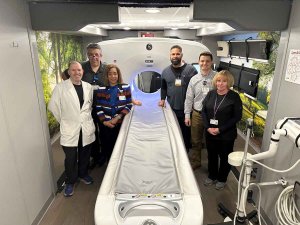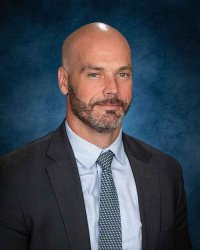Displaying items by tag: Saratoga Hospital, Renee RodriguezGoodemote, Ginger Simor, Joshua Zamer, Peter Hopper, opioids, addiction, Community Health Center, SPARK, Suboxone
Hospital Creates New Addiction Team
Front photo shows the Saratoga Community Health Center on Hamilton Street. Photo by Larry Goodwin. In gallery photos (from left): Dr. Ginger Simor; Dr. Joshua Zamer; and Dr. Renee Rodriguez-Goodemote of the Saratoga Hospital Medical Group. Photos provided.
SARATOGA SPRINGS – For months, three doctors in the Saratoga Hospital Medical Group have been leading a team of medical professionals who are determined to offer solutions for the problem of drug addiction in local communities.
The team operates a new program out of the Saratoga Community Health Center offices at 24 Hamilton Street, where more than 100 individuals struggling with addiction are currently being offered a comprehensive treatment regime that includes long-term primary care and behavioral health.
The new program is intended to serve as a local complement to the St. Peter’s Addiction Recovery Center (SPARC) and its affiliate offices.
Drug addiction “is an equal-opportunity disease” affecting people of all age groups and backgrounds, says Saratoga Hospital spokesman Peter Hopper.
Earlier this week, Hopper arranged an interview with the trio of physicians leading the effort: Dr. Renee Rodriguez-Goodemote, director of the Community Health Center; Dr. Ginger Simor, a psychiatrist; and Dr. Joshua Zamer, the addiction medicine specialist who has been treating patients in the program since April.
Case and social workers as well as health center employees provide crucial daily support and assistance, the doctors said.
The three doctors were asked to discuss the widely publicized growth in opioid addiction and the overall purpose of the new program.
“The definition of addiction is compulsive, out-of-control use that essentially takes over your life,” explained Dr. Zamer. “All you do is spend your time thinking about obtaining or using the drug…people lose their job, their spouse, their family, their money, their house, their car.”
Zamer talked about the “hijacked brain hypothesis” in the addiction field, which stipulates that people lose control of their normal cognitive functions by allowing the pleasure-seeking limbic system of the human brain to take control.
Powerful drugs such as heroin raise the dopamine levels in the brain “a thousand times more” than “a piece of chocolate cake,” Zamer said, and the downward spiral begins.
That means addiction must be seen as a physical disease much like cancer and diabetes, according to Zamer.
“Addicts get a bad rap,” he said. “A lot of them want to be clean, they really do. This has ruined their life. They’re not choosing this like it’s such a great lifestyle.”
In four out of five cases, Zamer reported, serious drug addiction starts with prescription opioids. He referred to studies showing how 25 percent of all people hospitalized in the United States go home with an opioid prescription. Of those individuals, he added, more than half are still using opioids 90 days later.
“The new push is for a three- or seven-day prescription,” Zamer continued, pointing to recent changes in both federal and state laws.
In the month of September alone, Zamer is projecting more than 170 total patient visits in the Community Health Center as part of the drug-treatment program. On a busy day he may see 15 patients. He said he is actively “carrying” 107 patients.
Hopper indicated that the program is open to individuals struggling with any type of addiction, including alcohol and sedative benzodiazepines.
Zamer commonly prescribes for treatment a milder opioid called Suboxone, which he said has a “ceiling effect” and negates the consumption of heroin. It is available in both pill and sublingual strip.
He also faulted doctors who are “preying” on opioid addicts by offering Suboxone—but only if the addicts can pay $500 up front and $200 or $300 for each follow-up visit.
“As I’m finding out, it’s rampant,” Zamer said. “Those docs are everywhere.”
“You can’t really overdose” on Suboxone, Zamer explained, noting how the Community Health Center team members are very strict about requiring patients not to feed any addictions while they are in treatment.
The federal government also strictly limits Suboxone prescribers like Zamer, who said current regulations cap his allowable patient number at 275.
“The team approach, by far, works the best,” offered Dr. Simor. “We try to treat the whole patient together. Their physical health, mental health and their addiction. It’s the best way to tackle this type of disorder.”
Simor added that part of the solution is helping patients figure out “how they got where they are today.”
She said treatment drugs such as Suboxone can “regulate neurotransmitters” in the brain, but ultimately conquering addiction involves each patient being “engaged” in the entire process.
Patients “can slowly start rebuilding their lives” when they realize that “living a sober life is bringing more enjoyment,” Simor said. The drug gets replaced with “happiness and health and goals, and that becomes what’s important.”
Dr. Rodriguez-Goodemote explained that the “integrated, longitudinal program” at the Community Health Center has been designed with each patient’s “wellness” in mind.
In addition to active drug treatment, information is shared with patients about the topics of nutrition, yoga and meditation. The goal, she said, is to assist patients in dealing with “painful experiences,” whether they are physical, emotional or mental.
“This should be a set of providers that are with you for as long as you need us,” Rodriguez-Goodemote said.
In a subsequent email, Rodriguez-Goodemote added: “We saw families and patients struggling with addiction. Access issues. Frustrations with relapse. I was the voice early on, but hospital leadership quickly recognized we had the expertise and the responsibility to commit resources to address this addiction epidemic head-on. And we took on the challenge.”
[Readers are encouraged to post respectful comments regarding the article below.]





























 How to resolve AdBlock issue?
How to resolve AdBlock issue? 









